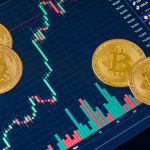The XRP Profit Trap: 26.5B Tokens in the Red
XRP is trading around the $2 mark, yet almost 26.5 billion XRP tokens are still sitting at a loss, and this unusual situation has become one of the most talked-about metrics in the crypto market. Even though XRP is nearly four times higher than it was in late 2024, only about 58.5% of its circulating supply is currently in profit, which means that a huge chunk of holders actually bought their tokens at much higher prices during the hype-driven peaks of 2025. This creates a strange paradox where the chart looks strong compared to last year, but the average late buyer is still deeply underwater.
The reason lies in how on-chain analytics calculate realized profit and loss. Instead of looking at today’s market price, data platforms like Glassnode track the price at which tokens last moved. If someone bought XRP at $3.20 and has never sold, their address is marked as losing money even if the current price looks healthy to anyone who zooms out. That’s exactly what happened throughout XRP’s massive 2025 rally, where waves of late buyers piled in around the $3 to $3.65 range, especially during spikes fueled by the SEC settlement, Ripple’s large acquisitions, and the launch of several spot XRP ETFs.
The ETF story was particularly powerful, with firms like Franklin Templeton, Bitwise, and 21Shares launching dedicated products, while Canary Capital’s XRPC ETF alone attracted almost $278 million. Combined with Ripple’s regulatory win over the SEC and its $500 million capital raise, momentum flooded into XRP. But while early investors were accumulating profits, late buyers were entering at overheated prices. As the hype cooled, XRP settled into a tight range around $2.10, leaving anyone who bought above $2.50 or near the $3.65 peak hoping desperately for a rebound.
On-chain data also shows that long-term holders have been heavily cashing out, realizing profits at a rate that has surged nearly 240% since September. At the same time, XRP futures open interest has dropped sharply from almost $10 billion earlier in the year to around $3.8 billion, showing that speculative traders have backed off. When leverage dries up, liquidity thins, and sudden pumps become harder to sustain, leaving the market vulnerable to slower, choppy movement instead of explosive rallies.
Retail sentiment isn’t helping either. Wallets holding fewer than 100 XRP have quietly sold off about 1.38% of their balances, which usually signals frustration from small-scale investors. While this kind of retail capitulation can look bearish, it sometimes marks an early stage of a market reset, where weak hands leave and more patient, long-term buyers begin to take their place. Still, the biggest challenge XRP faces right now is psychological. When nearly half of all supply is underwater, holders become anchored to their entry points and emotionally attached to “getting back to even.” This creates invisible resistance zones where every rally is met with selling pressure from investors desperate to exit without a loss. It’s not a technical resistance line drawn on a chart it’s a human one.
Despite all this, XRP’s fundamentals remain stronger than they’ve been in years. The SEC cloud is gone, Ripple is expanding aggressively through acquisitions, and ETFs are bringing institutional capital into the ecosystem. The tension lies between strong fundamentals and fragile market structure. A top-heavy market filled with late buyers simply needs time, patience, or a catalyst to rebalance. From here, XRP could follow a few different paths. It could continue grinding sideways near the $2 mark, slowly absorbing excess supply until underwater holders stabilize. It could face another deeper flush, shaking out the last pockets of weak hands before forming a healthier base. Or it could surprise the market with a sudden upside break fueled by new institutional inflows or broader crypto momentum. Whichever path unfolds, positioning will matter as much as fundamentals. If inflows from ETFs continue while retail exits, XRP could be setting the stage for a more stable long-term structure.
For holders, the key is aligning expectations with reality. XRP isn’t weak because of its ecosystem—it’s under pressure because many people bought too high, too fast. Understanding whether we’re approaching XRP as traders or long-term investors can help guide decisions more rationally. Smaller position sizes, avoiding FOMO-driven entries, and waiting for calmer market periods can help avoid repeating the cycle that created the massive underwater supply.
The story of XRP’s 26.5 billion tokens sitting at a loss is ultimately a lesson in timing, patience, and emotional discipline. The fundamentals remain intact, but the market needs breathing room to digest the exuberance of 2025. If history is any guide, once enough weak hands have exited and long-horizon capital dominates again, XRP will have the structural support it needs for a healthier next leg.





















